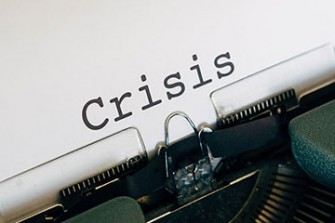Principle 4
The board leads
The board is intentional in its leadership, defining the work it needs to do and how it wishes to address it.
The board’s role is to invent the future, not mind the shop [1] - John Carver
The owners of the entity have vested in the board responsibility, accountability and an expectation that they will lead. At the very least this means taking control of their own work.
Boards often just respond to management actions or the crisis of the day. The number one comment that arises during our board reviews, consistent with others around the world, is: “I wish we had more time for strategic thought”.
A McKinsey study [2] noted that most boards today still spend around 70% of their time on reporting, reviewing, budgeting and compliance. In other words, boards continue to focus on their rear-view mirror. The solution lies in board’s own hands.
Good boards are organised. They plan the use of their time in advance; they make clear their information needs. With thorough policy frameworks, clear delegation and specific monitoring criteria in place, management do not have to fill the board pack with irrelevancies. Time can be found.
Most of a board’s time should be spent on what is yet to happen, as that is the only thing they can affect. The board should be considering future options in a planned and structured way. A useful perspective on board work is that it should be more about problem finding and less about problem solving. Yes, things happen that require their urgent attention. But, in normal times, one third of the meeting will give more than enough time for an organised board’s compliance and oversight duties.
This is also about honouring the time and talents of the people around the table and not dwelling on matters of modest relevance at best. This is nothing more demotivating than having exceptional people waste time on matters of little consequence.
Principle 5
Oversight is predetermined
Compliance is efficient. The matters requiring oversight have been made clear along with the related criteria and any permitted variances.
The problem is not measurement, but excessive measurement and inappropriate measurement – not metrics, but metric fixation. [3] - Jerry Z Muller
All boards are obliged to have effective oversight of both conformance and performance—a long list that now includes organisational culture, health and safety, supply chain integrity and climate impact.
The board must first determine what is important. Most business-as-usual activity should be within the board’s policy framework. Once in place, the board’s concern is simply that all matters continue to be within that policy envelope. If not, then certainly an alert is required. The board cannot possibly make that judgement, but the chief executive should be able to. The board should trust that judgment but will occasionally seek independent verification on particular matters.
Conformance is criterion-based. Not all information is relevant at the governance level. Good boards make it clear to their chief executives not only what they want reported, but how much depth or detail is necessary.
All directors should have financial competency, relevant to context. Financial oversight is not about the detail but about alignment to policy. The board is interested in relationships, ratios, characteristics and the avoidance of unacceptable conditions. Resources must be demonstrably allocated to achieving stated outcomes. The budget is a plan. The relevant consideration is what happens from this point forward.
Performance oversight will flow from stated outcomes and how they are measured in the annual business plan.
Risk reporting too often looks like a kaleidoscopic laundry list splashed across multiple pages. Make clear the handful of risks that concern the board most and require constant oversight of those matters.
Compliance is necessary assurance, but the true point of any measurement and monitoring system is learning and improvement. That moves more into genuine governance.
Notes
- Carver, J. Boards that Make a Difference. Jossey Bass. 3rd edition 2006.
- Cited in Stitger, M. & Cooper, C. Boards that Dare. How to Future Proof Today's Corporate Boards, Bloomsbury Business 2018, p21
- Muller, J.Z. The Tyranny of Metrics, Princeton University Press, 2018 p40








